Antoinette Pinchot Bradlee
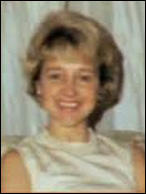
Antoinette Pinchot was born in New York City on 15th January, 1924. Her father Amos Pinchot, was a wealthy lawyer who helped fund the radical journal, The Masses. He was also a key figure in the Progressive Party. Her mother, Ruth Pinchot, was a journalist who worked for worked for magazines such as The Nation and The New Republic. (1)
As a child Antoinette and her sisters, Mary and Rosamund were brought into contact with left-wing intellectuals. People like Mabel Dodge, Crystal Eastman, Max Eastman, Louis Brandeis, Robert La Follette and Harold Ickes were regular visitors at their Grey Towers home in Milford, Pennsylvania. According to Nina Burleigh: "At Grey Towers the women were practicing nudists, and they often wandered the grounds near the pool and waterfall naked, to the great delight of the servants." (2)
Antoinette attended Brearley School and Vassar College. After graduating in 1945 she worked on the staff of Vogue. Two years later she married lawyer Steuart L. Pittman. The couple lived in Georgetown, Washington, and over the next seven years she gave birth to four children (Andrew, Nancy, Rosamond and Tamara. (3)
Antoinette Pinchot & Ben Bradlee
In August 1954, Antoinette Pittman and her married sister, Mary Pinchot Meyer, went on holiday to Europe. While they were in Paris they met an old friend, Ben Bradlee, who was working for Newsweek. Bradlee later recalled: "The weekend that changed my life forever came in August of 1954, when our friends the Pinchot sisters hit town. Mary Pinchot Meyer, mother of three and wife of Cord Meyer, war hero turned World Federalists president and CIA biggie, and Antoinette Pinchot Pittman, mother of four, wife of Steuart Pittman, a Washington lawyer. They were both members of our Washington crowd - on the last leg of a European tour, to which they had treated themselves after seven years of diapers and dishes." (4) Bradlee fell in love with Antoinette (Tony) and after divorcing his first wife, Jean Saltonstall Bradlee, the couple were married in Paris.
Bradlee began working at Newsweek in Washington. In early 1959 Bradlee went to a dinner held by Douglas Dillon. That night Bradlee met John F. Kennedy and Jacqueline Kennedy. He later recalled: "I sat next to Jackie, and Jack sat next to Tony. We came home together, and by the time we said good night, we were friends, comfortable together and looking forward to the next time... When I got to know Kennedy, I kind of staked him out as part of my own territorial imperative, and as he prospered, so did I... Little by little, it was accepted by the rest of the Newsweek Bureau and by New York that Kennedy was mine. If a quote was needed, I was asked to get it, and without really understanding what running for president entailed, or where it would all end, I was embarked on a brand-new journey. Nothing in my education or experience had led me to conceive of the possibility that someone I really knew would hold that exalted job. The field in front of him was filled with mines. His age - at forty-three, he would be the youngest man ever elected president, the first one born in the twentieth century. His religion - too much of America believed that a Catholic president would have to take orders from the pope in Rome. His health - he had been given the last rites several times, and had been referred to by India Edwards, chairman of the Citizens for Lyndon B. Johnson National Committee, as a "spavined little hunchback." His father Joseph P. Kennedy's reputation was secure as a womanizing robber baron, who had been anti-war and seen as pro-German while he was Ambassador to Britain during World War II, and pro-McCarthy during the fifties." (5)
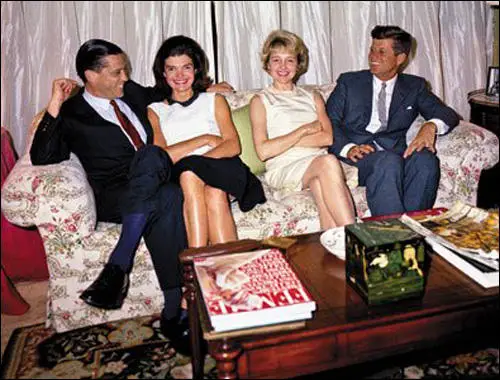
Newsweek assigned Ben Bradlee to cover Kennedy full time as he travelled the country in pursuit of the presidency. "I flew to Los Angeles the week before the Democratic National Convention in July 1960, and a week before Kennedy and his team arrived. If it's a close race, the pre-convention cover story is one of the toughest news magazine assignments there is. The cover should be the nominee, but has to be selected on Wednesday, at least five days before the nominee is selected. The story must be finished Saturday afternoon, two days before. If you pick the right candidate, the editors are geniuses. If you pick the wrong man, you have a big problem, like looking for work. Kennedy had won the big primaries that counted, and was not threatened by the other Democratic candidates. I had persuaded Newsweek's editors that Kennedy would be the nominee, primarily because Larry O'Brien, Kennedy's political wizard, was the best delegate counter in the business and I had checked his last best delegate count. And so Kennedy's picture was on our pre-convention cover." (6)
Mary Pinchot Meyer
Antoinette Bradlee was very close to her sister, Mary Pinchot Meyer. After she divorced Cord Meyer, Mary moved close to the Bradlees. Mary was also an artist and set up an art studio in their converted garage. In January, 1962, Mary began a sexual relationship with President John F. Kennedy. (7) Charles Bartlett, a journalist who ran the Washington bureau of the Chattanooga Times, and a close friend of Kennedy's became concerned about the affair: "I really liked Jack Kennedy. We had great fun together and a lot of things in common. We had a very personal, close relationship... Jack was in love with Mary Meyer. He was certainly smitten by her, he was heavily smitten. He was very frank with me about it, that he thought she was absolutely great.... It was a dangerous relationship." (8)
In April 1962 Mary Meyer began visiting Timothy Leary, the director of research projects at Harvard University. According to his biography, Flashbacks: "She appeared to be in her late thirties. Good looking. Flamboyant eyebrows, piercing green-blue eyes, fine-boned face. Amused, arrogant, aristocratic." Leary goes on to claim that she said "I want to learn how to run an LSD session... I have this friend who's a very important man. He's impressed by what I've told him about my own LSD experiences and what other people have told him. He wants to try it himself." (9)
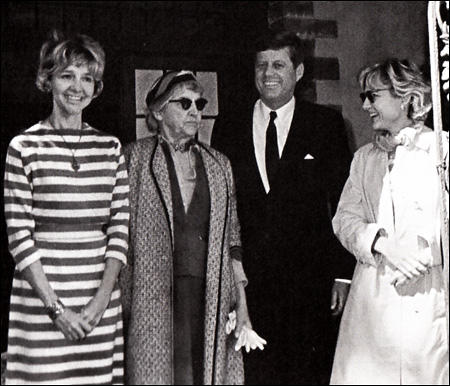
Nina Burleigh has argued: "Kennedy's sexual escapes were legendary in Georgetown. To the rest of America he was a family man with a beautiful wife, a man of caution, wit, and strategy. In private he was dazzlingly reckless.... Some of his most infamous sexual liaisons were with real actresses on the West Coast, women procured with the help of his brother-in-law, the actor Peter Lawford. Lawford ran with Frank Sinatra and Dean Martin, who converged with Kennedy and various actresses and prostitutes for wild parties at the Lawford beach house in Santa Monica." (10) Bobby Baker claims that Kennedy told him: "You know, I get a migraine headache if I don't get a strange piece of ass every day." (11)
White House gate logs show Mary Meyer signed in to see the president at or around 7.30 p.m. on fifteen occasions between October 1961 and August 1963, always when Jacqueline Kennedy is known to have been away from Washington, with one exception when her whereabouts are not verifiable by White House records or news reports. "The gate logs do not tell the entire story of who was in the White House, because there were other entrances and many occasions when people have said they were inside the White House without being signed... The fact that Mary Meyer's name is so often entered means she was not hidden and was probably there more often than the logs indicate." (12) Kenny O'Donnell told Leo Damore, that in October 1963 Kennedy told him that he "was deeply in love with Mary, that after he left the White House he envisioned a future with her and would divorce Jackie." (13)
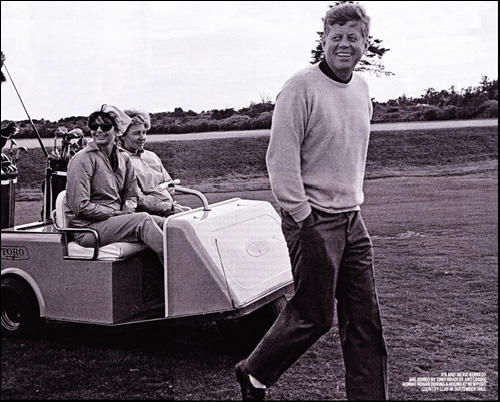
the Newport Country Club (September 1963)
Ben Bradlee later insisted that he knew nothing of Kennedy’s sex life at the time, including his affair with his sister-in-law. (14) In his autobiography, The Good Life (1995) he claimed: "like everyone else, we had heard reports of presidential infidelity, but we were always able to say we knew of no evidence, none... Of course, I had heard reports of girlfriends. Everyone had. Even my father, who was trying to get up the nerve in 1960 to vote for a democrat for the first time in his life, asked me about rumors circulating among his friends that Kennedy was a 'fearful girler'." (15)
Bradlee admits that he did once talk to Kennedy about these rumours. It was at the time that journalists were investigating a story that he was still involved with Florence Pritchett Smith, a woman he had nearly married in 1944. (16) She was married to Earl E. T. Smith, a family friend. Seymour Hersh has argued: Many historians have said that Kennedy had a long-standing romance with Smith's wife, Florence." (17) When Bradlee asked Kennedy about this denied it, "They're always trying to tie me to some story about a girl, but they can't - there are none." (18)
Death of Mary Pinchot Meyer
Timothy Leary has claimed that a few days after John F. Kennedy had been killed he received a disturbing phone call from Mary Pinchot Meyer. He wrote in his autobiography, Flashbacks (1983): Ever since the Kennedy assassination I had been expecting a call from Mary. It came around December 1. I could hardly understand her. She was either drunk or drugged or overwhelmed with grief. Or all three." Meyer told Leary: "They couldn't control him any more. He was changing too fast. They've covered everything up. I gotta come see you. I'm afraid." (19)
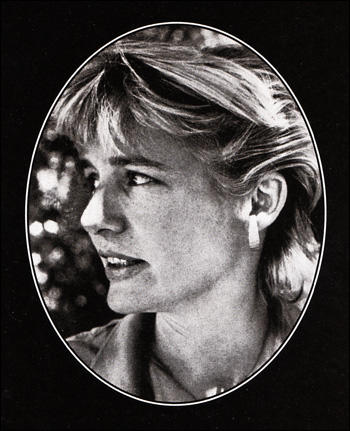
On 12th October, 1964, Mary Pinchot Meyer was shot dead as she walked along the Chesapeake and Ohio towpath in Georgetown. Henry Wiggins, a car mechanic, was working on a vehicle on Canal Road, when he heard a woman shout out: "Someone help me, someone help me". He then heard two gunshots. Wiggins ran to the edge of the wall overlooking the towpath. He later told police he saw "a black man in a light jacket, dark slacks, and a dark cap standing over the body of a white woman." (20)
Mary appeared to be killed by a professional hitman. The first bullet was fired at the back of the head. She did not die straight away. A second shot was fired into the heart. The evidence suggests that in both cases, the gun was virtually touching Mary’s body when it was fired. As the FBI expert testified, the “dark haloes on the skin around both entry wounds suggested they had been fired at close-range, possibly point-blank”. (21)
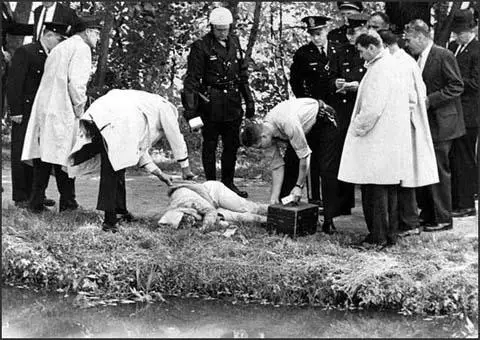
Ben Bradlee, points out that the first he heard of the death of Mary Pinchot Meyer was when he received a phone-call from Wistar Janney, his friend who worked for the CIA: "My friend Wistar Janney called to ask if I had been listening to the radio. It was just after lunch, and of course I had not. Next he asked if I knew where Mary was, and of course I didn't. Someone had been murdered on the towpath, he said, and from the radio description it sounded like Mary. I raced home. Tony was coping by worrying about children, hers and Mary's, and about her mother, who was seventy-one years old, living alone in New York. We asked Anne Chamberlin, Mary's college roommate, to go to New York and bring Ruth to us. When Ann was well on her way, I was delegated to break the news to Ruth on the telephone. I can't remember that conversation. I was so scared for her, for my family, and for what was happening to our world. Next, the police told us, someone would have to identify Mary's body in the morgue, and since Mary and her husband, Cord Meyer, were separated, I drew that straw too." (22)
Peter Janney, the author of Mary's Mosaic (2012) has questioned this account of events provided by Bradlee. "How could Bradlee's CIA friend have known 'just after lunch' that the murdered woman was Mary Meyer when the victim's identity was still unknown to police? Did the caller wonder if the woman was Mary, or did he know it, and if so, how? This distinction is critical, and it goes to the heart of the mystery surrounding Mary Meyer's murder." Janney even questions if it really was his father who phoned Bradlee. He points out that Wistar Janney had died a year before Bradlee published his account of events. (23)
That night Antoinette Pinchot Bradlee received a telephone call from Mary's best friend, Anne Truitt, an artist living in Tokyo. She told her that it "was a matter of some urgency that she found Mary's diary before the police got to it and her private life became a matter of public record". (24) Mary had apparently told Anne that "if anything ever happened to me" you must take possession of my "private diary". Ben Bradlee explains in The Good Life (1995): "We didn't start looking until the next morning, when Tony and I walked around the corner a few blocks to Mary's house. It was locked, as we had expected, but when we got inside, we found Jim Angleton, and to our complete surprise he told us he, too, was looking for Mary's diary." (25)
James Jesus Angleton later claimed that he had also received a telephone call from Anne Truitt. His wife, Cicely d'Autremont Angleton, confirmed this in an interview given to Nina Burleigh. (26) However, an article by Ron Rosenbaum and Phillip Nobile, in the New Times on 9th July, 1976, gives a different version of events with the Angleton's arriving at Mary's house that evening to attend a poetry reading and that at this stage they did not know she was dead. (27)
Joseph Trento, the author of Secret History of the CIA (2001), has pointed out: "Cicely Angleton called her husband at work to ask him to check on a radio report she had heard that a woman had been shot to death along the old Chesapeake and Ohio towpath in Georgetown. Walking along that towpath, which ran near her home, was Mary Meyer's favorite exercise, and Cicely, knowing her routine, was worried. James Angleton dismissed his wife's worry, pointing out that there was no reason to suppose the dead woman was Mary - many people walked along the towpath. When the Angletons arrived at Mary Meyer's house that evening, she was not home. A phone call to her answering service proved that Cicely's anxiety had not been misplaced: Their friend had been murdered that afternoon." (28)
Divorce from Ben Bradlee
Antoinette Pinchot Bradlee gave birth to two more children, Dominic (born 1958) and Marina (born 1960). She studied art at Washington’s Corcoran School of Art, and became a ceramicist, jeweler and painter. "She earned a strong review for her concrete sculptures at her first and only solo exhibition, in 1972 at Washington’s Jefferson Place Gallery." (29)
Ben Bradlee explains in his biography, The Good Life (1995) , that his marriage got into difficulties in 1973: "Tony (Antoinette) had come to feel that much of journalism was shallow, dwelling as much as journalism does on the sudden and dramatic, in preference to the meaningful and the good. She was more and more involved (with her work). I had all but lost any real hope of recapturing the delight we had shared... I had reached another one of those critical forks in the road. One way involved staying with Tony, the woman I once loved, the mother of two of my children, and trying to rekindle happiness. The other way involved recognizing that I had fallen in love." (30)
The woman he had fell in love with was Sally Quinn, a young journalist at the Washington Post. "Explaining my new situation to my children was painful beyond description... Dino (Dominic) worked it out in a matter of months. He was so sad, but I think he understood. Marina pretended to understand from the beginning... It took Tony and me five years to become friends again; the day she called out of the blue to say that whatever had happened between us was as much her fault as it was mine." (31)
James Truitt
James Truitt gave an interview to the National Enquirer that was published on 23rd February, 1976, with the headline, "Former Vice President of Washington Post Reveals... JFK 2-Year White House Romance". Truitt told the newspaper that Mary Pinchot Meyer was having an affair with John F. Kennedy. He also claimed that Mary had told them that she was keeping an account of this relationship in her diary. Truitt added that the diary had been removed by Ben Bradlee and James Jesus Angleton. (32)
The newspaper sent a journalist to interview Ben Bradlee about the issues raised by Truitt. According to one eyewitness account, Bradlee "erupted in a shouting rage and had the reporter thrown out of the building". Nina Burleigh claims that it was Watergate that motivated Truitt to give the interview. "Truitt was disgusted that Bradlee was getting credit as a great champion of the First Amendment for exposing Nixon's steamy side in Watergate coverage after having indulgently overlooked Kennedy's hypocrisies." Truitt was also angry that Bradlee had not exposed Kennedy's affair with Mary Pinchot Meyer in his book, Conversations with Kennedy. Truitt had been close to Meyer during this period and had received a considerable amount of information about the relationship. (33)
Ben Bradlee, who had gone on holiday with his new wife, Sally Quinn, gave orders for the Washington Post to ignore the story. However, Harry Rosenfeld, a senior figure at the newspaper, commented, "We're not going to treat ourselves more kindly than we treat others." (34) However, when the article was published it included several interviews with Kennedy's friends who denied he had an affair with Meyer. Kenneth O'Donnell described her as a "lovely lady" but denied that there had been a romance. Timothy Reardon claimed that "nothing like that ever happened at the White House with her or anyone else." (35)
Bradlee and James Jesus Angleton continued to deny the story. Some of Mary's friends knew that the two men were lying about the diary and some spoke anonymously to other newspapers and magazines. Later that month Time Magazine published an article confirming Truitt's story. (36) In an interview with Jay Gourley, Antoinette Bradlee admitted that her sister had been having an affair with John F. Kennedy: "It was nothing to be ashamed of. I think Jackie might have suspected it, but she didn't know for sure." (37)
Two journalists, Ron Rosenbaum and Phillip Nobile, decided to carry out their own investigation into the case. After interviewing James Truitt and several other friends of Mary Pinchot Meyer, including the Angletons, they published an article, entitled, "The Curious Aftermath of JFK's Best and Brightest Affair" in the New Times on 9th July, 1976. According to this version, the search for the diary took place on Saturday, 17th October, five days after her murder. As well as Antoinette (Tony) Bradlee, James and Cicely Angleton, Cord Meyer and Anne Chamberlain, were also present. The search party found nothing. (38)
Later that same day, Tony Bradlee was said to have discovered a "locked steel box" in Mary's studio. Inside it was one one of Mary's artist sketchbooks, a number of personal papers and "hundreds of letters". Peter Janney, the author of Mary's Mosaic (2012) points out: "Tony Bradlee later claimed that the presence of a few vague notes written in the sketchbook - allegedly including cryptic references to an affair with the president - persuaded her that she'd found her sister's missing diary. But Mary's artist sketchbook wasn't her real diary. It was just a ruse." (39) The contents of the box were given to Angleton who claimed he burnt the diary.
Antoinette Pinchot Bradlee died aged 87 on 9th November, 2011.
Primary Sources
(1) Adam Bernstein, The Washington Post (14th November, 2011)
Antoinette Pinchot Bradlee’s understated beauty, quiet charm and her second marriage, to future Washington Post executive editor Benjamin C. Bradlee, placed her on an elite social plateau in the nation’s capital in the late 1950s and 1960s.
She was a slender, comely blonde, and her unmistakable allure didn’t go unnoticed by first lady Jacqueline Kennedy. She once told the president in the presence of the Bradlees, “Jack, you always say that Tony is your ideal woman.”
“Tony” Bradlee gradually withdrew from the demands of being a Washington hostess and wife of a hard-driving editor. By all accounts, she found journalism uninspiring. She was divorced from Ben Bradlee in the mid-1970s and channeled a great deal of her energy to a growing interest in the fine arts as well as the spiritual philosophy movement started by Russian-born mystic George Ivanovitch Gurdjieff.
Mrs. Bradlee, 87, died Nov. 9 at the Ingleside at Rock Creek retirement community in the District. She had dementia, said her daughter Rosamond Casey.
While Mrs. Bradlee’s life with her husband Ben was in many ways charmed - private dinners at the White House and weekend getaways at Hyannis Port, Mass., with the Kennedys - it also had enduring sorrows. Their circle included Mrs. Bradlee’s older sister, Mary Meyer, a painter whose murder in 1964 on the C&O Canal towpath remains unsolved.
The case took an eerie twist, Ben Bradlee later wrote in his memoir, “A Good Life.” The Bradlees saw CIA counterintelligence chief James J. Angleton picking the padlock on Meyer’s Georgetown art studio in an attempt to retrieve her diary. (Meyer and Angleton’s wife were friends.)
Mrs. Bradlee subsequently found the diary, which appeared to disclose her sister’s affair with late President John F. Kennedy. Mrs. Bradlee and her husband, who was serving as head of Newsweek’s Washington bureau, turned the diary over to Angleton with the promise that the CIA would destroy it.
More than a decade later, Mrs. Bradlee was upset when she heard Angleton had not kept his word. Through an intermediary, she got the diary back and set it on fire.
Antoinette Eno Pinchot was born in New York on Jan. 15, 1924, to a politically active family.
Her father, Amos, was a lawyer, founding member of the Progressive Party and an antiwar advocate during World War I. Her mother, the former Ruth Pickering, was a writer and critic for left-wing publications such as the Masses, the Nation and the New Republic. Her uncle Gifford Pinchot, a friend of president Theodore Roosevelt, was a former Pennsylvania governor and became the first chief of the U.S. Forest Service.
Tony Pinchot was a graduate of the Brearley School in New York and in 1945 graduated from Vassar College in Poughkeepsie, N.Y. She worked on the staff of Vogue magazine before her marriage, in 1947, to lawyer Steuart L. Pittman, who later served as Kennedy’s assistant defense secretary.
While on a European trip with her sister in 1954, she met Bradlee, who was then chief European correspondent for Newsweek. They divorced their spouses, wed in 1956 and settled in Washington, where then-Sen. Kennedy (D-Mass) was a Georgetown neighbor.
Mrs. Bradlee told Kennedy biographer Sally Bedell Smith that on a particularly festive 46th birthday party for then-President Kennedy in 1963, he made a pass, which she rebuffed.
Ben Bradlee joined The Post in 1965 and three years later became its executive editor, aggressively transforming the paper into one of the country’s most respected dailies. He wrote in his memoir that their marriage began to disintegrate because of his near-total devotion to The Post, combined with his wife’s desire to seek spiritual fulfillment through her artwork and Gurdjieff.
Survivors include four children from her first marriage, Andrew Pittman of Washington, Nancy Pinchot of New Haven, Conn., Rosamond Casey of Charlottesville and Tamara Pittman of Brooklyn, N.Y.; two children from her second marriage, Dominic “Dino” Bradlee of Hydra, Greece, and Marina Murdock of Purcellville; a stepson, Benjamin Bradlee Jr. of Cambridge, Mass.; and 13 grandchildren.
Having studied art at Washington’s Corcoran School, Mrs. Bradlee was a ceramicist, jeweler and, in her final years, a painter. She earned a strong review for her concrete sculptures at her first and only solo exhibition, in 1972 at Washington’s Jefferson Place Gallery.
“What makes these works remarkable is not the hardness of their shells, but the delicacies of their interiors,” wrote Post art critic Paul Richard. “These pieces do not yell, they do not gobble space. Their shapes are generally simple — spheres, columnar pods, and discs — but each shape has an opening, a window, and there is nothing simple about what goes on inside.”
References
(1) Adam Bernstein, The Washington Post (14th November, 2011)
(2) Nina Burleigh, A Very Private Woman (1998) page 29
(3) Adam Bernstein, The Washington Post (14th November, 2011)
(4) Ben Bradlee, The Good Life (1995) page 159
(5) Ben Bradlee, The Good Life (1995) page 205
(6) Ben Bradlee, The Good Life (1995) page 209
(7) Peter Janney, Mary's Mosaic (2012) page 226
(8) Charles Bartlett, interview with Peter Janney (10th December, 2008)
(9) Timothy Leary, Flashbacks (1983) page 128
(10) Nina Burleigh, A Very Private Woman (1998) page 189
(11) Seymour Hersh, The Dark Side of Camelot (1997) page 389
(12) Nina Burleigh, A Very Private Woman (1998) page 193
(13) Leo Damore, interviewed by Peter Janney (February, 1992)
(14) Marilyn Berger, New York Times (22nd October, 2014)
(15) Ben Bradlee, The Good Life (1995) pages 268
(16) Joan and Clay Blair, The Search for JFK (1976) pages 359-362
(17) Seymour Hersh, The Dark Side of Camelot (1997) page 157
(18) Ben Bradlee, The Good Life (1995) pages 268
(19) Timothy Leary, Flashbacks (1983) page 194
(20) Testimony of Henry Wiggins (12th October, 1964)
(21) Nina Burleigh, A Very Private Woman (1998) page 263
(22) Ben Bradlee, The Good Life (1995) pages 258-262
(23) Peter Janney, Mary's Mosaic (2012) page 72
(24) Nina Burleigh, A Very Private Woman (1998) page 267
(25) Ben Bradlee, The Good Life (1995) page 267
(26) Cicely d'Autremont Bradlee, interviewed by Nina Burleigh (1996)
(27) Ron Rosenbaum and Phillip Nobile, New Times (9th July, 1976)
(28) Joseph Trento, Secret History of the CIA (2001) pages 280-282
(29) Adam Bernstein, The Washington Post (14th November, 2011)
(30) Ben Bradlee, The Good Life (1995) page 389
(31) Ben Bradlee, The Good Life (1995) page 391
(32) National Enquirer ( 23rd February, 1976)
(33) Nina Burleigh, A Very Private Woman (1998) page 286
(34) Howard Bray, The Pillars of the Post (1980) page 138
(35) Nina Burleigh, A Very Private Woman (1998) page 287
(36) Time Magazine (8th March, 1976)
(37) Nina Burleigh, A Very Private Woman (1998) page 288
(38) Ron Rosenbaum and Phillip Nobile, New Times (9th July, 1976)
(39) Peter Janney, Mary's Mosaic (2012) page 75
